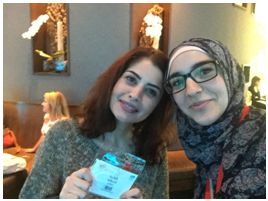 I presented “Core Vocabularies: Same or different for Bilingual Language Learning and Literacy Skill building with Symbols?” and together with Dana; “Developing an Arabic Symbol Dictionary for AAC users: Bridging the Cultural, Social and Linguistic Gap”. We received a lot of great feedback about both presentations and many people showed interest in our project. One Speech and Language Pathologist (SLP) from Malta approached us having very similar issues with the analysis of core vocabulary. She mentioned that the issues I discussed in my presentation were almost identical to the issues in Maltese and was seeking advice on how to categorise pronouns given their attachment to nouns in the Maltese language.
I presented “Core Vocabularies: Same or different for Bilingual Language Learning and Literacy Skill building with Symbols?” and together with Dana; “Developing an Arabic Symbol Dictionary for AAC users: Bridging the Cultural, Social and Linguistic Gap”. We received a lot of great feedback about both presentations and many people showed interest in our project. One Speech and Language Pathologist (SLP) from Malta approached us having very similar issues with the analysis of core vocabulary. She mentioned that the issues I discussed in my presentation were almost identical to the issues in Maltese and was seeking advice on how to categorise pronouns given their attachment to nouns in the Maltese language.
A few SLPs from Israel approached us seeking advice about resources and access to our symbols as 20% of the population is Arabic speaking. A team from Germany and a team from Sweden were very interested in using our symbols with refugees and the German team were interested in collaborating with us on a project that focused on a German/Arabic symbol dictionary.
Many attendees also found our second presentation very insightful as Dana and I discussed the criteria we used to adapt the symbols to be culturally appropriate. Several commented that they found the Arabic cultural and social norms as well as environmental considerations very different when compared to their personal experiences and were grateful for opening their eyes to things that would have never occurred to them as being offensive or unsuitable.
One of the highlights of this trip was the screening of our film at the ISAAC Film Festival which can now be seen on the Arabic and English home pages of the Tawasol Symbol website. Our film shared the story of Mohammed, an eye gaze user for whom we developed prayer symbols so that he could actively participate in prayer with his family. It was screened alongside approximately 10 other films from around the world and provided such a unique insight into the mix of films presented. Many people approached me after the screening and congratulated the Tawasol team on our “amazing work”, a “wonderful film” and a few took our details as they could see how the prayer symbols could benefit some of their clients.
For the rest of the week, Dana and I went to sessions with a focus on core vocabularies and where possible in bi-lingual situations. It seemed that the issue of core vocabularies in other languages being quite different to English was a global linguistic challenge; whether it was Spanish, Maltese, Hebrew or German.
We visited the exhibition and saw some great new products and services. At the Boardmaker/TobiiDynavox stand we were shown some of their new apps including SnapScene and Pathways for Snap Scene. In these apps you are able to take pictures, add voice recordings, circle and highlight objects in images as well as label them. Pathways then gives you tips and tools on how to make these pictures an opportunity for communication, social interaction and learning. We also visited VocalID who customise your speech generated device to sound just like you. We topped off our ISAAC 2016 experience by attending the BUILD meeting whose members hope to bring together people working in AAC in developing countries. It was lovely to see/hear the work being done in South Africa, Taiwan, Singapore, Africa and Eastern European countries. It really made us think about creating an ISAAC Arabia or at least get the conversation going as to how we are collectively advancing the status of AAC users in the Arab region.
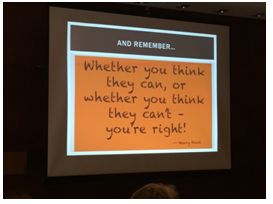

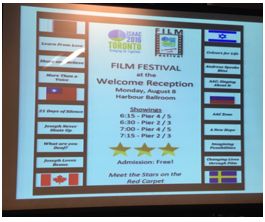
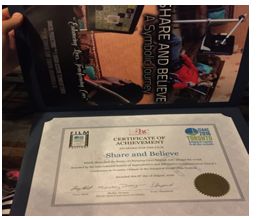


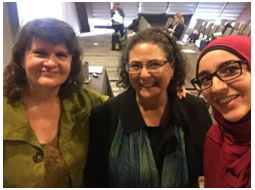
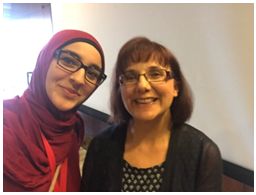

 Many Arabic speaking individuals use expressive hand gestures and at present the Tawasol symbols show this in a static image such as ‘thank you’ with the palm of the right hand on the chest. However, the action of the palm of the right hand going to the chest with a bowing of the head can be a sign of respect or thanks. But as with all cultures these gestures require careful localisation and more participatory research. Nevertheless, adding animation to some of the present Tawasol symbols could make the use of the symbols more inclusive.
Many Arabic speaking individuals use expressive hand gestures and at present the Tawasol symbols show this in a static image such as ‘thank you’ with the palm of the right hand on the chest. However, the action of the palm of the right hand going to the chest with a bowing of the head can be a sign of respect or thanks. But as with all cultures these gestures require careful localisation and more participatory research. Nevertheless, adding animation to some of the present Tawasol symbols could make the use of the symbols more inclusive. So in addition to our attention to cultural, religious, social and linguistic sensitivities we must keep thinking of new ideas and innovate to create the most efficient symbols that reach out to all our users.
So in addition to our attention to cultural, religious, social and linguistic sensitivities we must keep thinking of new ideas and innovate to create the most efficient symbols that reach out to all our users. The
The 